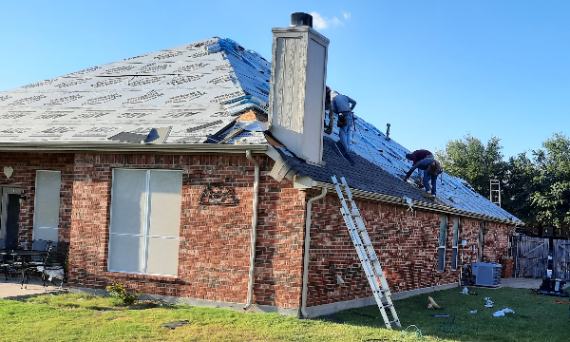The work stages for a Roofers Dallas can vary depending on the specific project, type of roofing material, and the scope of work involved. However, here’s a general outline of the typical work stages that a roofer might go through when installing or repairing a roof:
- Initial Assessment and Planning:
- Evaluate the existing roof (if applicable) to determine its condition and any potential issues.
- Assess the scope of work required, including whether it’s a new installation, replacement, or repair job.
- Calculate the materials needed, labor requirements, and estimated time for completion.
- Consider safety precautions and plan for necessary equipment.
- Material Selection:
- Choose the appropriate roofing material based on factors such as climate, budget, and architectural style.
- Order the required roofing materials, ensuring they’re delivered on time and in the correct quantities.
- Preparation:
- Ensure a safe work environment by setting up safety barriers and using personal protective equipment (PPE).
- Remove any existing roofing material that needs to be replaced or repaired.
- Inspect the roof deck for damage and make necessary repairs or replacements.
- Installation:
- Install any necessary underlayment or moisture barriers to protect the roof deck.
- Begin installing the roofing material according to manufacturer guidelines and industry best practices.
- Depending on the type of roofing material (shingles, tiles, metal panels, etc.), follow the appropriate installation procedures.
- Flashing and Sealing:
- Install flashing around roof penetrations (chimneys, vents, skylights) to prevent leaks.
- Apply sealants and caulking as needed to ensure water-tightness.
- Ventilation and Insulation (if applicable):
- Install roof ventilation components to allow proper airflow and prevent moisture buildup in the attic.
- Ensure that insulation is properly installed to maintain energy efficiency and temperature regulation.
- Finishing Touches:
- Trim excess material, align edges, and make sure the roofing installation looks clean and neat.
- Inspect the work to ensure it meets quality standards and specifications.
- Cleanup and Disposal:
- Clean up the work area, removing debris, nails, and any leftover materials.
- Dispose of waste materials responsibly, following local regulations.
- Final Inspection:
- Conduct a thorough inspection of the completed roofing project to ensure it meets all safety and quality standards.
- Client Approval and Handover:
- Walk the client through the completed work, explaining any necessary maintenance or care instructions.
- Obtain client approval and address any concerns they may have.
- Documentation:
- Keep records of the project, including materials used, work performed, and any warranties provided.
It’s important to note that safety should always be a top priority throughout every stage of the roofing project. Roofers should be trained in safety procedures and use proper equipment to prevent accidents and injuries. Additionally, the specific steps may vary based on the type of roofing project and the local building codes and regulations in your area.
